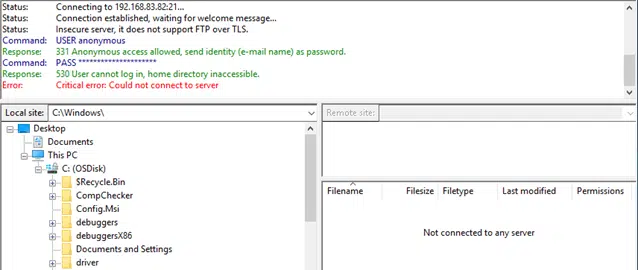Table of Contents
How To Access FTP Files On A Remote Host?
Do you Have An FTP Account On A Remote Host But You Are Unable To Connect? This logs you into a directory that contains your site files. From there, you can connect using an FTP client like FileZilla.
Hostname or IP Address:
FTP (File Transfer Protocol) is a network protocol that allows you to transfer files from one computer to another over a TCP/IP connection. It is commonly used to upload web pages from a computer to a hosting server. Your web hosting provider will set up an FTP account for you, but you can also create your own.
To connect to a remote host using FTP, you need to know the hostname or IP address of the server where your website is hosted. This information is usually provided by your web hosting provider or in the cPanel interface of your web hosting account. You will also need an FTP client, which is a software program that allows you to connect to an FTP server.
When you enter the hostname or IP address into an FTP client, it must be correct. If the server cannot be found, it will return an error message. You can resolve this problem by entering the correct address or contacting your host to verify that the hostname is correct.
You can use a program like FileZilla to connect to an FTP server. The program offers a wide variety of features, including the ability to transfer large files and browse directories on the server. You can also use it to download and upload files from the server to your computer. You can also change your hostname, port, and FTP username and password using the options menu.
Password:
When you access an FTP server, you will need to use a username and password to access the files on the host’s machine. Your web host may create these accounts for you, but you can also set them up yourself. Creating an FTP account is important for your website, as it allows you to upload and download files, edit them, and manage the site from a remote location.
Once you’re logged in, the FTP command line displays the user’s top-level directory (e.g., /pub). You can use the cd command to change this directory and view other directories on the FTP server. You can also copy files to and from the server using the get and put commands. The get and put commands are variations of these that let you transfer multiple files at once.
To limit the level of access for an FTP user, select Users > Edit FTP User Access. You can specify the level of access, the directory to which an FTP user can navigate, and the quota for the account.
You Have An FTP Account On A Remote Host But You Are Unable To Connect. To enable an FTP user to monitor folders on your cPanel server for changes, click Monitor Folders. You can choose from a list of the most commonly used folders, or you can create a new folder to monitor. You can also select whether an alert message will be sent when changes are detected within the selected folders.
Username:
An FTP username is a username that allows you to connect with your web. Server and transfer files between your computer and the host. Most hosting providers set up FTP accounts when you buy a web hosting account. However, you can also create a new FTP account by logging into your control panel. If you are using cPanel, scroll down to the “Files” section and click on the “FTP Accounts” icon. You will need to enter a desired username and password. In the first two fields select a directory you want. The user to have access to. By default, this will be your public html folder, where your website’s files are stored.
Once the user has an FTP login. They will be able to navigate within the specified directory and delete or create files and subdirectories. The user will not be able to create directories named etc or lib in the top-level directory. And they will only have permission to access their folders.
You can use a web browser to access an FTP site. But it is not the safest way to do so because your username and password are visible. You type them into the browser. For the best security, you should always use a special FTP program to connect to your server.
Port:
The FTP protocol allows users to upload and download files from their website. It works on a client/server model where the server acts as an FTP daemon and continuously listens for incoming connections. The client connects to the server through a temporary port (which can range from 1024 to 65535). Once connected. The user can access files on the remote host’s server and can also create their subdirectory on the server.
A typical FTP client will display the FTP> prompt after successful authentication. To open a connection to the remote host. A user will enter the hostname or IP address of the remote system followed by an FTP username and password. To change the working directory on the remote host. A user can use the put command or the put command to copy. Multiple files from the local computer to the remote server.
To disconnect from the remote host, a user can use either the disconnect command or the ftp quit command. However, the disconnect command does not erase any macros defined by an automatic login entry, whereas the quit command does. Additionally, if a user wants to keep track of all responses from the remote host during a file transfer session. They can enable the verbose mode by entering the v flag. This is a useful option for transferring large files over long distances.






Add comment